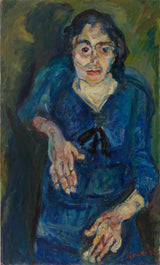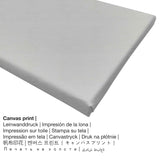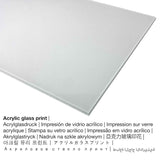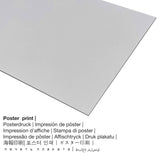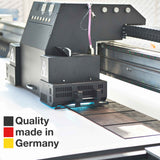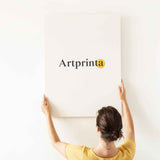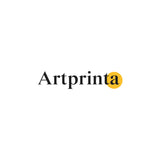Chaim Soutine, 1919 - Nwanyị na-acha anụnụ anụnụ (Nwanyị na-acha anụnụ anụnụ) - mbipụta nka mara mma
Ụtụ gụnyere. Mbupu gbakọrọ na ndenye ọpụpụ.
Ozi akụkọ izugbe
a 20th narị afọ masterpiece was made by Chaim Soutine. The version of the artwork was made with the size Overall: 39 1/2 x 23 3/4 in (100,3 x 60,3 cm). Mmanụ na kwaaji was applied by the painter as the technique for the work of art. Furthermore, this work of art is part of the digital art collection of Barnes Foundation. With courtesy of - Site n'ikike nke Barnes Foundation, Merion na Philadelphia, Pennsylvania (licensed: public domain).Creditline of the artwork: . What is more, the alignment of the digital reproduction is in portrait format with a side ratio of 9: 16, nke pụtara na ogologo bụ 45% mkpụmkpụ karịa obosara. The painter Chaim Soutine was an artist, whose style can be attributed primarily to Expressionism. The European artist was born in 1893 in Minskaya Voblasts', Belarus and died at the age of 50 in 1943 in Paris, Ile-de-France, France.
Ngwa ngwaahịa ị nwere ike ịhọrọ
The product dropdown menu ofers you the opportunity to select your favorite material and size. You can pick your preferred size and material between the subsequent choices:
- Mbipụta kanvas: A canvas print is a printed canvas stretched on a wooden frame. A canvas creates the sculptural effect of three-dimensionality. Your canvas print of this work of art will allow you to transform your custom fine art print into a large size artpiece as you would see in a gallery. A canvas print has the advantage of being low in weight, meaning that it is easy and straightforward to hang your Canvas print without the use of any wall-mounts. Because of thata canvas print is suitable for all kinds of walls.
- Bipụta na enyo acrylic: The acrylic glass print, often denoted as a UV print on plexiglass, changes your selected artwork into home décor and forms a viable alternative to canvas or aluminium dibond prints. Your favorite work of art is made with the help of modern UV direct printing technology. The great upside of a plexiglass fine art print is that contrasts plus smaller color details become recognizeable thanks to the subtle tonal gradation.
- Aluminom ihe eji eme ihe: These are metal prints on aluminium dibond material with an outstanding effect of depth. The white & bright components of the original artwork shimmer with a silky gloss, however without any glow.
- Mpempe akwụkwọ (ihe kwaaji): A poster is a printed canvas with a slight structure on the surface, which reminds the original work of art. Please bear in mind, that depending on the size of the poster print we add a white margin of around 2-6cm around the work of art, which facilitates the framing.
Ozi dị mkpa: We strive to depict the art products as accurate as possible and to exhibit them visually in our shop. At the same time, the tone of the print materials and the print result can diverge slightly from the representation on your monitor. Depending on the screen settings and the condition of the surface, color pigments can unfortunately not be printed one hundret percent realistically. In view of the fact that all the art prints are printed and processed manually, there might as well be slight variations in the motif's size and exact position.
Nkọwa ihe ahaziri ahazi
| Bipụta ụdị ngwaahịa: | ezi nka mmeputakwa |
| Usoro mmeghari: | mmeputakwa n'ụdị dijitalụ |
| Usoro nhazi: | Mbipụta UV ozugbo (mbipụta dijitalụ) |
| Ihe ngosi: | German mere |
| Stockdị ngwaahịa: | a na-achọ |
| Eji ngwaahịa emebere: | ime ụlọ, foto mgbidi |
| Nhazi nka nka: | nhazi ihe osise |
| Oke akụkụ onyonyo: | ( Ogologo: obosara) 9: 16 |
| Nkọwa nke oke onyonyo a: | ogologo bụ 45% mkpụmkpụ karịa obosara |
| Akwa mmeputakwa dị: | ígwè obibi akwụkwọ (aluminium dibond), ebipụta canvas, mbipụta akwụkwọ mmado (akwụkwọ kwaaji), mbipụta iko acrylic (nwere ezigbo mkpuchi iko) |
| Nha n'arọwa n'elu ihe ndọtị (mbipụta akwa akwa): | 50x90cm - 20x35", 100x180cm - 39x71" |
| Mbipụta iko acrylic (nke nwere ezigbo mkpuchi iko): | 50x90cm - 20x35" |
| Nhọrọ nke mbipụta akwụkwọ mmado (akwụkwọ kwaaji): | 50x90cm - 20x35" |
| Mbipụta aluminom (aluminium dibond ihe) dị iche iche: | 50x90cm - 20x35" |
| Nhazi nke nka nka: | biko chere na ngwaahịa a enweghị etiti |
Data nka ahaziri
| Aha nka nka: | "Woman in Blue (The Woman in Blue)" |
| Nhazi nka nka: | sere |
| Otu izugbe: | nkà nke oge a |
| Nhazi oge: | 20th narị afọ |
| Afọ nka: | 1919 |
| Afọ nka: | ihe karịrị 100 afọ |
| Usoro nka izizi: | mmanụ na kwaaji |
| Ogo nke ọrụ nka izizi: | N'ozuzu: 39 1/2 x 23 3/4 na (100,3 x 60,3 cm) |
| Ụlọ ihe ngosi nka: | Ntọala Barnes |
| Ebe ngosi nka: | Philadelphia, Pennsylvania, Njikota Obodo Amerika |
| E Nwere na: | Ntọala Barnes |
| Ụdị ikike nka: | ngalaba ọha |
| Site n'aka: | Site n'ikike nke Barnes Foundation, Merion na Philadelphia, Pennsylvania |
Ozi omenka
| Aha onye nka: | Chaim Soutine |
| Aha ndi ozo: | Sutin Chaim, סוטין חיים, Soutine Chaïm, Soutine, Chaïm Soutine, Soutine Haïm, ch. soutine, Sūchin Shaimu, Soutine C. |
| Gender: | nwoke |
| Nationality: | Russian |
| Ọrụ: | onye na-ese ihe |
| Obodo obibi: | Russia |
| Otu nka: | omenkà nke oge a |
| Ụdị nka: | Nkwupụta |
| Nwụrụ na afọ nke: | 50 afọ |
| Afọ ọmụmụ: | 1893 |
| Ebe omuma: | Minskaya Voblasts, Belarus |
| Afọ nwụrụ: | 1943 |
| Nwụrụ na (ebe): | Paris, Ile-de-France, France |
© echebe nwebiisinka | www.artprinta.com (Artprinta)
General information by the museum (© - Barnes Foundation - Ntọala Barnes)
Born in Lithuania, Soutine emigrated to Paris in 1913, settling in the bohemian neighborhood of Montparnasse. Many of his paintings depict people seated alone against backgrounds of deep saturated color. The identity of his sitters is rarely known, but we can assume they were friends or acquaintances who would pose for free; Soutine was desperately poor. Like many of his canvases focusing on the human figure, this one has a searing psychological intensity. Thick, gestural brush strokes create a distorted body and spectacularly talon-like hands; black eyes stare out from a face swirling with green, orange and blue. Space is suffocating.

